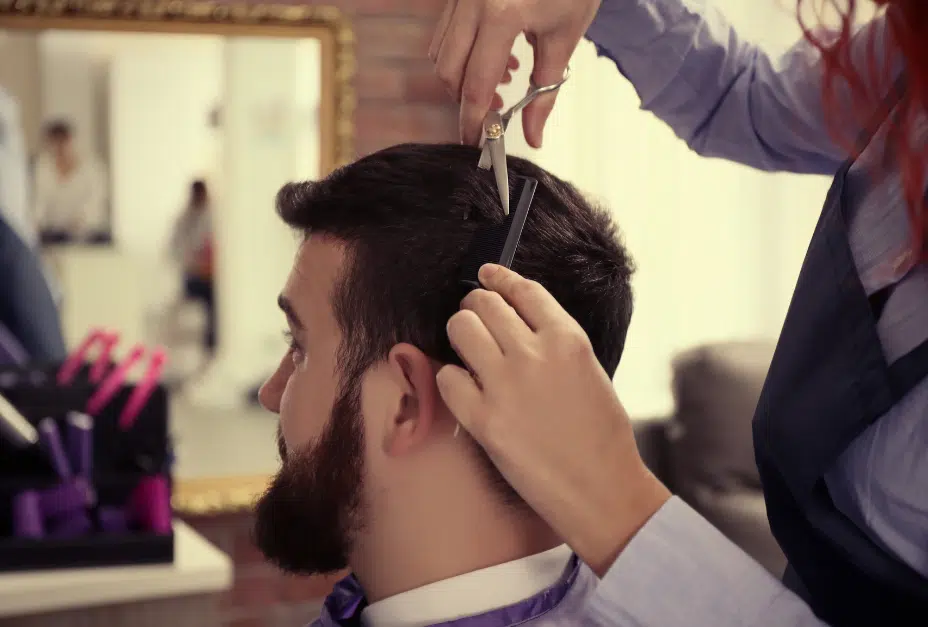What to do after a hair transplant?
What To Do After A Hair Transplant? Patients who have just undergone a hair transplant procedure are often very excited about the prospect of showing off their new hair to their friends and family as well as anyone new they may happen to meet, but pati transplant has the best possibility of successents must also understand just how important it is to take proper care of their newly transplanted hair as well as their remaining natural hair to ensure the continued and long-term health of the follicles.

There are often other questions and concerns regarding how the patient should approach hair care following the completion of a hair transplant, and it is also quite common for more practical questions to arise as well. Ideally, the patient and the doctor will discuss these issues before even selecting a hair transplant procedure to ensure the best possible result following its completion. Even for patients who have had lengthy discussions with their doctor before, during and after the procedure, it is relatively common for questions to be pondered relating to how many follow-up appointments is most ideal as well as how the patient can go about hiding the horizontal scar created during the FUT procedure.
How to Take Care of Your Hair After a Hair Transplant
In the days and weeks following the hair transplant session, the client will have to abide by some very specific precautionary guidelines to make sure that the transplant has the best possibility of success. Once the patient has healed to a reasonable degree, the transplanted hair can be cared for in the same way as before and does not require any specific type of care to ensure its continued contribution to the patient’s improved overall appearance.
While a special level of care is not necessarily required, there are a number of strategies hair transplant patients may wish to consider utilizing for the purpose of maintaining a healthy head of hair while also reducing the risk of any future damage, thinning or hair loss. A focus on improved nutrition, for example, can contribute to healthier and fuller hair follicles that create a greater sense of a full head of hair.
Many hair transplant patients also begin using natural oils to strengthen their hair, with coconut oil being a popular option to prevent damage from the frequent use of shampoo. Patients will also find that their doctor may prescribe a medication that helps limit the possibility of any future hair loss, though this may vary depending on each individual case.
 How to Cut Your Hair After a Hair Transplant
How to Cut Your Hair After a Hair Transplant
Hair transplant patients are often surprised to learn how quickly they are able to cut their hair following the procedure and the range of options at their disposal in terms of style. It is best to wait until about a month after the hair transplant session’s completion (or until the transplanted follicles have fallen out, which is to be expected) to get a hair cut, but it is possible to do so earlier as well.
A patient who has undergone a hair transplant can cut their hair in whatever way they wish, as the transplanted follicles will respond to a haircut in the same way as the naturally occurring follicles. Patients who prefer to keep their hair very short need not be concerned regarding the possibility of damage to their transplanted follicles when cutting their hair and can continue to cut their hair in the way that best suits them.
How a patient intends to cut and style their hair following the hair transplant procedure should be a point of discussion before the actual procedure is selected, as the FUE procedure tends to be better suited for patients who wish to keep their hair very short. With the FUT procedure, a closely cropped haircut may reveal the horizontal scar from the donor site, and FUE does not leave such a scar due to its status as a no-suture, no-scar option.
How to Hide a Scar Following a Hair Transplant
Patients who opt to undergo a Follicular Unit Transplant will be made aware of the fact that the procedure does leave a horizontal scar at the donor site, and this scar may indeed be visible to others should the patient choose to cut their hair very short. If the patient has no intention of maintaining such a short hairstyle, the hair transplant doctor should be more than capable of selecting a donor site that will be easily obscured by the remaining hair.
The Process of Hair Transplant
In the overwhelming majority of FUT procedures, it is difficult for anyone other than the doctor or patient to even locate the scar, so there should be little concern or worry about the possibility that it will be clearly noticeable by others. If the patient is still concerned about the mere possibility of the scar being noticed, then there are other options available that can successfully obscure the appearance of the scar.
Patients who choose FUT and are worried about the visibility of the scar sometimes choose to undergo an additional procedure called scalp micropigmentation which is a non-surgical procedure in which pigment is deposited into the skin through the use of micro-needles. This contributes to the appearance of greater density in the area in which the scar exists and is successful in obscuring the scar’s appearance entirely.
It is important to note that most patients feel more than comfortable with the ability of the doctor to obscure the appearance of the scar left by FUT without requiring any additional procedures, but there is certainly a benefit to utilizing SMP for patients who are nonetheless concerned about the potential visibility of the scar.
 How Often to See the Doctor Following a Hair Transplant
How Often to See the Doctor Following a Hair Transplant
What is convenient for the patient will play a role in determining the total number of follow-up appointments, as will the type of procedure that is utilized to achieve the hair restoration. A patient who has undergone FUT may be scheduled for a follow-up appointment one week after the initial session to remove the sutures, though it should be pointed out that an out-of-town patient can just as easily have this done at just about any medical center.
For both FUE and FUT, the doctor is likely to wish to see the patient shortly after the initial appointment just to see how well the grafts are doing in the immediate aftermath of the procedure. While each doctor follows different guidelines for follow-up care, it is common for the doctor to schedule another appointment between four to six months from the time of the initial procedure. This follow-up appointment gives the doctor an opportunity to see how well the follicles are growing in and how much coverage has been achieved, and it also gives the patient the opportunity to go over any questions they may have for the doctor regarding the outcome of their procedure.
During these post-operative follow-up appointments, doctors and patients who previously discussed the possibility of multiple sessions to achieve the desired level of density in the recipient site can revisit the subject and evaluate their options going forward. It may be the case that the doctor and patient are satisfied with the outcome and feel a second session is not necessary as of yet, or both parties may agree that a second session would be the ideal course of action to achieve the ultimate goal of the patient undergoing the hair transplantation process.
Related Articles:

 How to Cut Your Hair After a Hair Transplant
How to Cut Your Hair After a Hair Transplant How Often to See the Doctor Following a Hair Transplant
How Often to See the Doctor Following a Hair Transplant